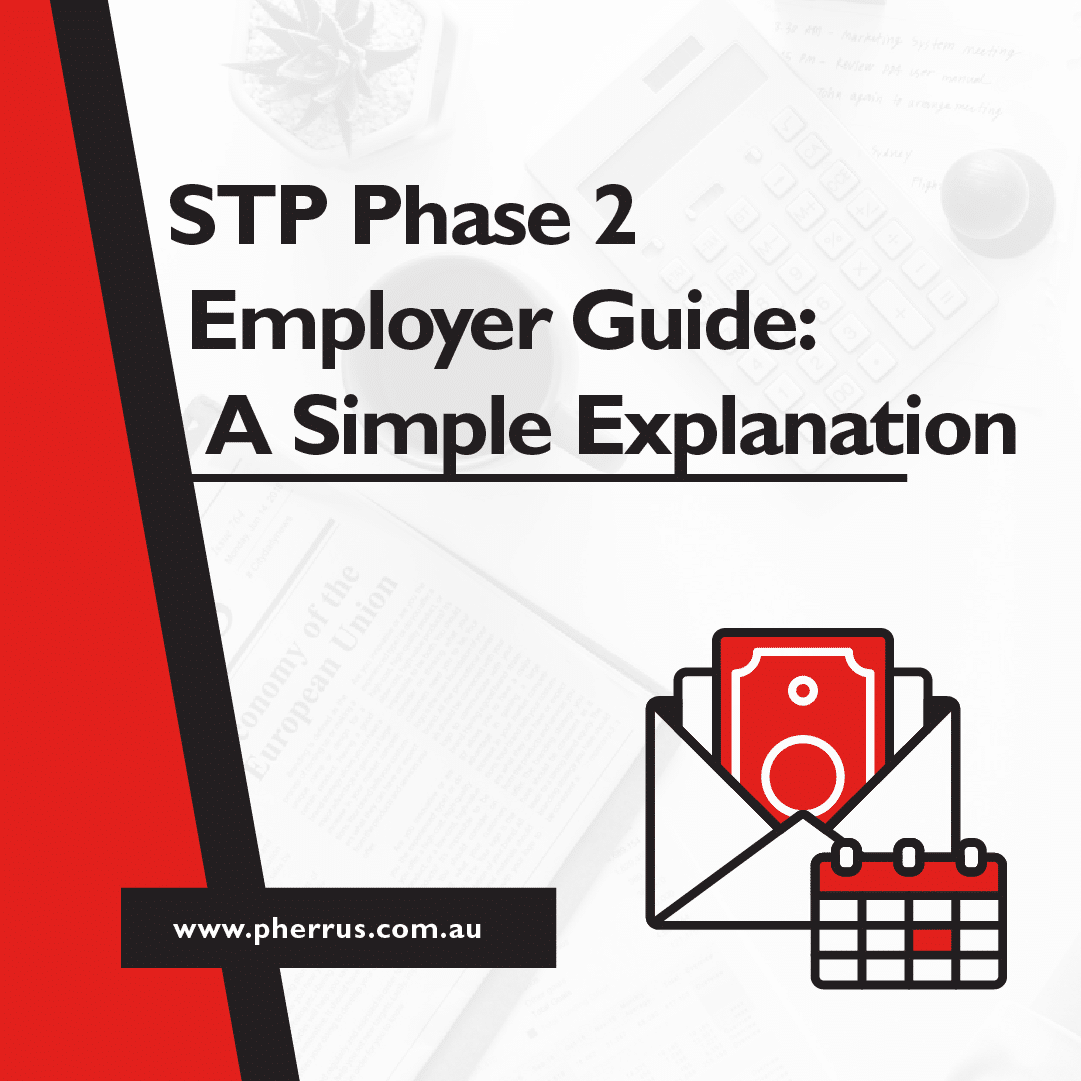The Australian Government has announced a $17.6 billion stimulus package on the 12 March 2020 in order to prevent Australia falling into a recession. Further, announced on the 22 March 2020 an additional $66 billion stimulus package on top of the previously announced $17.6 billion stimulus was announced. This is due to the economic impact suffered by the spread of the coronavirus, which has now been declared a pandemic. Further measures may be taken with changes taking place in just a matter of hours, with more money from the government expected to flow into the economy, as this stimulus was designed only to support the economy for at least a 6-month period.
1.Supporting Individuals & Households
- Income Support for Individuals ($14.1 Billion)
Eligibility to income support has been expanded in order to cover those impacted by the virus, as those previously that would not have been eligible will now be eligible to claim income support.
Further, on top of the income support an additional coronavirus supplement will be available, effectively doubling the original income support payment, as the coronavirus supplement will provide an additional $550 per fortnight
- Coronavirus supplement is temporary for the next 6-months
Expansion of access for income support:
- Permanent employees who have been stood down
- Loss of employment (Sole Traders, Casual Workers & Contract Workers)
- May include carers
Eligible Categories:
- Jobseeker Payment (and all payments progressively transitioning to JobSeeker Payment; those currently receiving Partner Allowance, Widow Allowance, Sickness Allowance and Wife Pension)
- Youth Allowance Jobseeker
- Parenting Payment (Partnered and Single)
- Farm Household Allowance
- Special Benefit recipients
Note:
Asset testing for Jobseeker Payment, Youth Allowance Jobseeker and Parenting Payment will be waived for the period of the Coronavirus supplement. Income testing will still apply to person’s other payments, consistent with current arrangements.
The employees still accessing employer entitlements for annual leave, sick leave or income protection insurance will not be able to access these benefits.
First scheduled payments, to take affect from the 27th April 2020.
-
Payments to Support Households ($4 Billion)
First payment of $750.00 announced in the first stimulus package, should start to be received by eligible recipients from the 31 March 2020.
Another, payment of $750.00 announced in the second stimulus package, expected to be received by eligible recipients from the 13 July 2020.
- Accessing the previously mentioned income support for individuals, will not be eligible for the second round of payments.
- Accessing the previously mentioned income support for individuals, will not be eligible for the second round of payments.
-
Temporary Early Release of Superannuation
Earlier access to superannuation is available for the 2020 & 2021 financial years, those eligible will be able obtain $10,000.00 from their superannuation during the 2020 & 2021 financial years.
- $10,000 access during the 2021 financial year, is only accessible during the first 3 months after the 1st July 2020
Note, that changes may apply due to legislation;
Eligibility of one of the following requirements:
- Unemployed
- Eligible to receive the income support for individuals (Coronavirus Supplement)
- After the 1 January 2020
- Made redundant
- Working hours reduced by 20% or more
- Sole trader, with turnover reduced by 20% or more
Note: This needs to be applied directly to ATO, if satisfied, ATO will notify the fund to release the money.
-
Provision of Support to Retirees ($876 Million)
Australian government, has reduced the drawdown rates for retirees by 50% temporarily for the 2020 & 2021 Financial Years:
Age Default minimun drawdown rates (%) Reduced rates by 50 percent for the 2019-20 and 2020-21 income year (%) Under 65 4 2 65-74 5 2.5 75-79 6 3 80-84 7 3.5 85-89 9 4.5 90-94 11 5.5 95 or more 14 7 Further, changes to the social security deeming rates as of the 1 May 2020.
- Upper Deeming Rate – 2.25%
- Lower Deeming Rate – 0.25%
2. Supporting for Businesses
- Cash Flow Assistance for Businesses ($31.9 Billion)
- First cash boost:
Government has quadrupled the initial stimulus package for small and medium sized businesses, from being able to access between $2,000.00 and $25,000.00 for PAYG tax withholdings, now set to access between $10,000.00 and $50,000.
Period of effect is for the quarterly March 2020 & June 2020 BAS lodgements, otherwise for monthly lodgements it includes; March 2020, April 2020, May 2020 and June 2020. You will be able to claim up to $50,000.00. Under this scheme, the employer will receive a payment equal to 100% of the total tax withholding up to $50,000 from March 2020 to June 2020.
Monthly lodgers will get the benefit three times as quickly based on the March tax withholding amount (300%).
- Second cash boost:
To qualify for the additional payment, the entity must continue to be active.
The total amount of the second cash boost will be equal to the total of their total initial Boosting Cash Flow (first cash boost) for Employers payment.
- Payment schedule (Payment will be done after lodgement is up to update for IAS and BAS):
Type of lodger Eligible Period Lodgement due date the cash boost payment date Quarterly Quarter 4 (April, May and June 2020)
Quarter 1 (July, August and September 2020)28/07/2020 (Receiving 50% of the cash boost)
28/10/2020 (Receiving 50% of the cash boost)Monthly Jun-20
Jul-20
Aug-20
Sep-2021/07/2020 (Receiving 25% of the cash boost)
21/08/2020 (Receiving 25% of the cash boost
21/09/2020 (Receiving 25% of the cash boost)
21/10/2020 (Receiving 25% of the cash boost) - Supporting apprentices and trainees
The Government is supporting small businesses to retain their apprentices and trainees. Eligible employers can apply for a wage subsidy of 50 per cent of the apprentice’s or trainee’s wage paid during the 9 months from 1 January 2020 to 30 September 2020. Where a small business is not able to retain an apprentice, the subsidy will be available to a new employer. Employers will be reimbursed up to a maximum of $21,000 per eligible apprentice or trainee ($7,000 per quarter).
Eligibility: The subsidy will be available to small businesses employing fewer than 20 full-time employees who retain an apprentice or trainee. The apprentice or trainee must have been in training with a small business as at 1 March 2020.
Note: Application for this subsidy to be directed to the Australian Apprenticeship Support Network (AASN).
- Temporary Relief for Financially Distressed Businesses
New measures put in place to keep businesses going, effectively reducing the stress to impacted businesses by delaying and deferring issues to a later date 6-months later.
Further, changes have been made for creditors chasing debtors for payment:
- Statutory demands can only be for demands with a minimum of $20,000
- Time frames for any notices, received from a creditor will be deferred to 6 months later (Bankruptcy Notice & Statutory Demand)
- Initiation of bankruptcy proceedings against a debtor increased from $5,000 to $20,000
Note; enforcement of debt can still occur via the court system.
- Businesses, continuing to operate, even while insolvent during this crisis, directors’ will not be held personally liable, so long as business continues to operate normally
- Supporting Business Investment
- No new changes, have been made
Instant asset write-off threshold has been raised from $30,000.00 and is now $150,000.00.
Further businesses that now have an annual turnover of less than $500 million, will have access to instant asset write-off, which was previously only accessible to businesses with less than an annual turnover of $50 million.
In addition to this accelerated depreciation for businesses with an annual turnover of less than $500 million, they will now be able to increase the rate of depreciation by an additional 50% on top of their current depreciation rate for a period of 15 months until the 30 June 2021.
Summary:
- Instant asset write-off threshold has been expanded ($700 million):
- $30,000.00 – $150,000.00 (Threshold raised to $150,000.00)
- Businesses with less than an annual turnover of $500 million now have access to the instant asset write-off until the 30th June 2020
(Raised from $50 million)
- Increase in depreciation deductions ($3.2 billion):
- Limited time, 15-month investment incentive until the 30 June 2021
- Restricted to the aforementioned businesses (less than $500 million turnover)
- Accelerated depreciation deductibility, able to apply another 50% depreciation that will apply on top of your original depreciation
- Only for new assets purchased since the start of this announcement till the 30 June 2021, will the accelerated depreciation be applicable
- Assistance for Severely Affected Regions & Industries
Government, provision of $715 million support package to the Australian airline industry and airports.
Previously assistance of $1 billion to the tourism, agriculture and education sector
Directors’ personal liability for insolvent trading:
3. Supporting the Flow of Credit
Australian government to support lending to SMEs, for unsecured loans by 50% of the loan being guaranteed by the government, to eligible SMEs with a turnover of less than $50 million.
Restrictions to loan guarantees:
- Maximum total size of loan of $250,000 per borrower
- Loan repayment period, restricted to be repaid within 3 years
- Initial 6-months of loan repayment is subject to a repayment holiday
- Unsecured finance, allowing borrowers to not provide an asset as security
Example 1 (Total tax withholding is under $10,000 including March and June quarter):
Sean’s Hairdresser Salon
Sean owns a hairdresser’s salon on the Gold Coast. He employs three employees who earn $44,260 per year. In the March and June 2020 Quarterly BAS, Sean reports withholding of $4,570 for his employees.
Sean’s business in the March 2020 quarter earned a total sale of $226,450, with total expenses incurred of $73,200.
March Quarter 2020 BAS:
| G1 – Total Sales | $226,450 |
| G11 – GST on Non-Capital Purchases | $73,200 |
| 1A – GST on Sales | $20,586 |
| 1B – GST on Purchases | $6,654 |
| GST Payable | $13,932 |
| W1 – Wages & Salaries | $33,195 |
| W2 – PAYG Withholding | $4,570 |
| 9 – BAS Payable | $18,502 |
| Economic Stimulus Package | $4,570 |
| 9 – BAS Payable (After Stimulus) | $13,932 |
Sean’s business due to the impact of the virus has subsequently experienced a significant drop in sales, earning a total sale of $30,900, with total expenses incurred remaining the same $73,200.
June Quarter 2020 BAS:
| G1 – Total Sales | $30,900 |
| G11 – GST on Non-Capital Purchases | $73,200 |
| 1A – GST on Sales | $2,809 |
| 1B – GST on Purchases | $6,654 |
| GST Refundable | $3,845 |
| W1 – Wages & Salaries | $33,195 |
| W2 – PAYG Withholding | $4,570 |
| 9 – BAS Payable | $725 |
| Economic Stimulus Package | $5,430 |
Note: ($10,000 – $4,570 As total tax withholding for two quarters are under $10,000, therefore, the entity can get the minimum stimulus package of $10,000 )
| 9 – BAS Refundable (After Stimulus) | $4,705 |
Additional payment after Jun 2020, the entity will be receiving another 10,000 (50% after June quarter lodgment and 50% after September lodgment)
Note: all the payments will be transferring into integrated account to offset tax debts first, rather than cash payment into business account.
Example 2 (Total tax withholding is above $10,000 including March and June quarter):
Sean’s Hairdresser Salon
Sean owns a hairdresser’s salon on the Gold Coast. He employs three employees who earn $64,260 per year. In the March and June 2020 Quarterly BAS, Sean reports withholding of $6,570 for his employees.
Sean’s business in the March 2020 quarter earned a total sale of $226,450, with total expenses incurred of $73,200.
March Quarter 2020 BAS:
| G1 – Total Sales | $226,450 |
| G11 – GST on Non-Capital Purchases | $73,200 |
| 1A – GST on Sales | $20,586 |
| 1B – GST on Purchases | $6,654 |
| GST Payable | $13,932 |
| W1 – Wages & Salaries | $33,195 |
| W2 – PAYG Withholding | $6,570 |
| 9 – BAS Payable | $20,502 |
| Economic Stimulus Package | $6,570 |
| 9 – BAS Payable (After Stimulus) | $13,932 |
Sean’s business due to the impact of the virus has subsequently experienced a significant drop in sales, earning a total sale of $30,900, with total expenses incurred remaining the same $73,200.
June Quarter 2020 BAS:
| G1 – Total Sales | $30,900 |
| G11 – GST on Non-Capital Purchases | $73,200 |
| 1A – GST on Sales | $2,809 |
| 1B – GST on Purchases | $6,654 |
| GST Refundable | $3,845 |
| W1 – Wages & Salaries | $33,195 |
| W2 – PAYG Withholding | $6,570 |
| 9 – BAS Payable | $2,725 |
| Economic Stimulus Package | $6,570 |
| 9 – BAS Refundable (After Stimulus) | $3,845 |
Additional payment after Jun 2020, the entity will be receiving another 13,140 (50% after June quarter lodgment and 50% after September lodgment)
Note: all the payments will be transferring into integrated account to offset tax debts first, rather than cash payment into business account.




